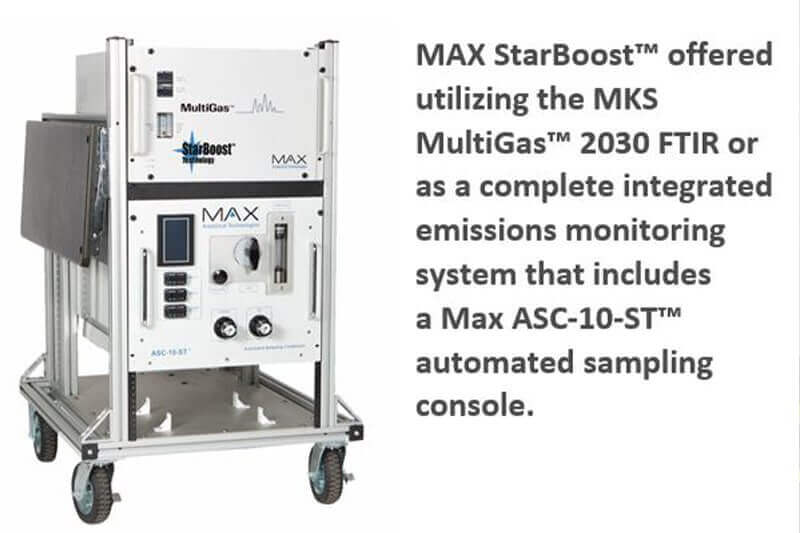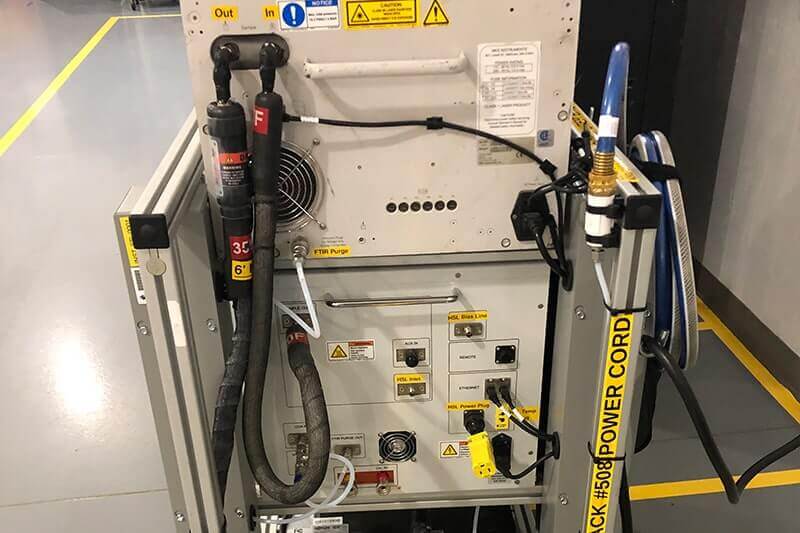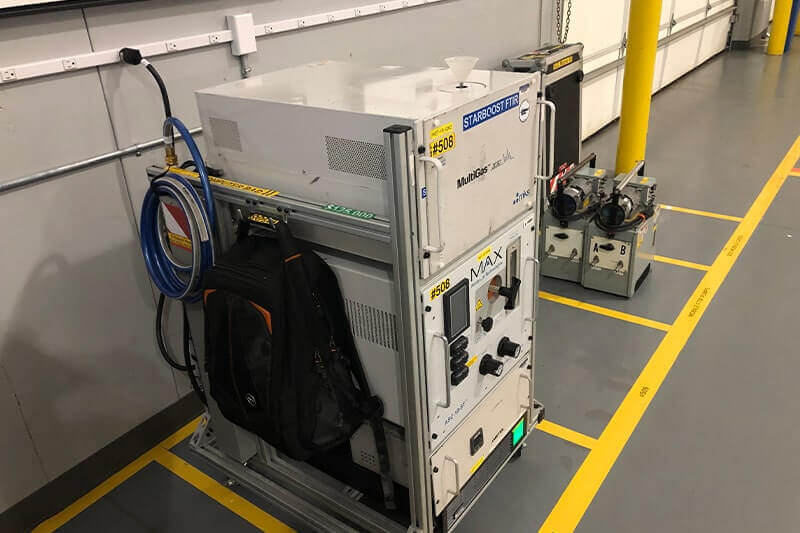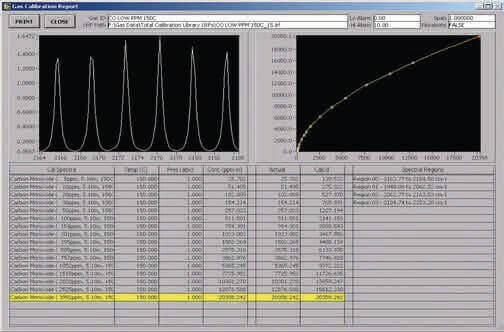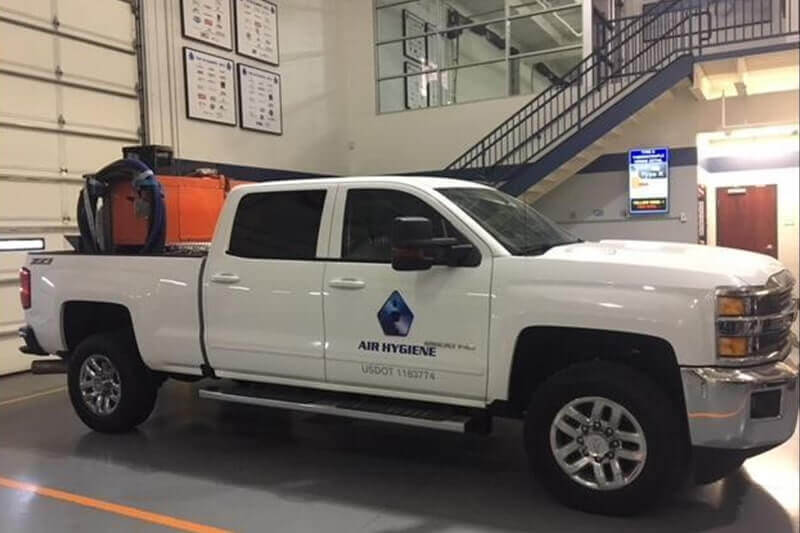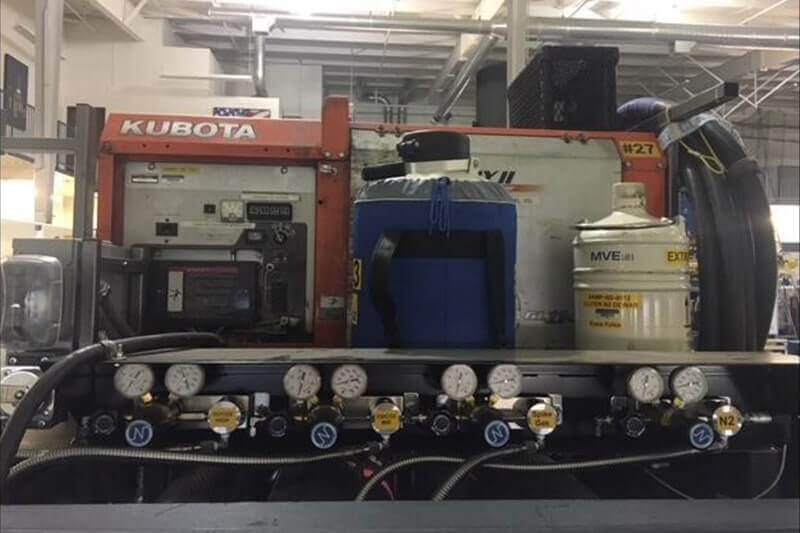Fourier Transform Infrared
Fourier Transform Infrared (FTIR) Spectroscopy
Why Air Hygiene FTIR Labs are the Solution for your Testing Needs!
- Ten (10) FTIR labs for formaldehyde, VOC’s, & HAPS by EPA Method 320, 321 & ASTM D-6348!
- Three (3) STARBOOST FTIR for 40 CFR 63 YYYY Turbine formaldehyde (< 91 ppb@15%O2) testing!
- Real-time data on-site for evaluation. Draft test data daily & final report in 10 Days!
- Catalyst performance analysis (inlet & outlet testing) on-site with real-time data!
- Speciated VOC’s on-site!
- Greenhouse Gases measured real-time, on-site (N2O, CO2, CH4)!
- SCR tuning with point-by-point data, real-time for NH3, NO, & NO2!
- Portable power by on-board generator!
- 20 QSTI certified personnel!
- Tests in all 50 states, Mexico, & Canada!
FTIR Compounds
Any gas or liquid compound that absorbs infrared light can potentially be identified and quantified using the FTIR. The gas phase infrared spectral standards are available for the compounds listed below. Reference spectra not included in this list may be already available or can be prepared.
- acetaldehyde
- acetic acid
- acetone
- acetonitrile
- acetophenone
- acrolein
- acrylic acid
- acrylonitrile
- allyl chloride
- 2-amino-2-methyl-1-propanol
- ammonia
- aniline (phenylamine)
- arsine
- benzene
- benzotrichloride
- benzyl chloride
- beta-propiolactone
- bis (chloromethyl) ether
- boron trichloride
- boron trifluoride
- bromoform
- 1,3-butadiene
- 1-butanol
- butyl acetate
- carbon dioxide
- carbon disulfide
- carbon monoxide
- carbon tetrachloride
- carbonyl fluoride
- carbonyl sulfide
- chloroacetic acid
- 2-chloroacetophenone
- chlorobenzene
- chloroform
- chloromethyl methyl ether
- chloroprene (2-chloro-1,3-butadiene)
- m-cresol
- o-cresol
- p-cresol
- cumene
- cyclohexanone
- 1,2-dibromo-3-chloropropane
- 1,4-dichlorobenzene
- dichloroethylether
- 1,3-dichloropropene
- dichlorvos
- difluoroethane
- difluoromethane
- dimethyl carbamyl chloride
- dimethyl formamide
- 1,1-dimethyl hydrazine
- dimethyl phthalate
- 1,4-dioxane - (1,4-diethylene oxide)
- epichlorohydrin
- 1,2-epoxybutane
- ethane
- ethanol
- ethyl acrylate
- ethyl benzene
- ethyl chloride (chloroethane)
- ethylbenzene
- ethylene
- ethylene dibromide - (dibromoethane)
- ethylene dichloride
- ethylene oxide
- ethylidene dichloride
- fluoroethane
- fluoromethane
- formaldehyde
- hexachlorobutadiene
- hexachlorocyclopentadiene
- hexachloroethane
- hexamethylphosphoramide
- hexane
- hexyl acetate
- hydrazine
- hydrogen bromide
- hydrogen chloride
- hydrogen fluoride
- isophorone
- isopropanol
- maleic anhydride
- methane
- methanol
- methyl bromide - (bromomethane)
- methyl chloride - (chloromethane)
- methyl chloroform - (1,1,1-trichloroethane)
- methyl ethyl ketone - (2-butanone)
- methyl hydrazine
- methyl iodide - (iodomethane)
- methyl isoamyl ketone
- methyl isobutyl ketone - (hexone)
- methyl methacrylate
- methyl tert butyl ether
- methylene chloride-(dichloromethane)
- n,n-diethyl aniline
- nitric oxide
- nitrogen dioxide
- n-nitrosodimethylamine
- n-nitrosomorpholine
- naphthalene
- nicotine
- nitrobenzene
- 2-nitropropane
- o-toluidine
- oxygen difluoride
- ozone
- pentafluoroethane
- perfluorobutane
- perfluoroethane
- perfluorohexane
- perfluoromethane
- perfluoropropane
- perfluoropropene
- phenol
- phosphine
- propane
- 1,2,3-propanetriol w/methyl oxirane
- propionaldehyde
- propylene dichloride
- propylene glycol
- propylene glycol methyl ether acetate
- propylene oxide
- 1,2-propylenimine-(2-methyl aziridine)
- qinoline
- silane
- silicon tetrafluoride
- styrene
- styrene oxide
- sulfur dioxide
- sulfur hexafluoride
- sulfuryl fluoride
- 1,1,2,2-tetrachloroethane
- tetrachloroethylene (perchloroethylene)
- tetraethoxy silane (TEOS)
- 1,1,1,2-tetrafluoroethane
- 1,1,2,2-tetrafluoroethane
- thionyl fluoride
- toluene
- 2,4-toluene diisocyanate
- 1,2,4-trichlorobenzene
- 1,1,2-trichloroethane
- trichloroethylene
- 2,4,5-trichlorophenol
- triethylamine
- 1,1,1-trifluoroethane
- 1,1,2-trifluoroethane
- trifluoromethane
- tungsten hexafluoride
- 2,2,4-trimethylpentane
- vinyl acetate
- vinyl bromide
- vinyl chloride
- vinylidene chloride
- m-xylene
- o-xylene
HOW IT WORKS
Fourier Transform Infrared (FTIR) Spectroscopy is used to examine and characterize organic and inorganic materials. The technique combines a microscope and infrared spectrometer. Data is produced in the form of a spectrum, with many bands that represent chemical bonding between two particular atoms or a group of atoms in a molecule. The spectrum is subsequently compared to a set of known reference materials for identification and interpretation. As an analytic technique, FTIR has several advantages. It requires only a minute sample. It takes only minutes to conduct and it will work with most liquids or gases. Air Hygiene’s sample system incorporates a heated sample pump and conditioning system to ensure data accuracy.
COMPOUND IDENTIFICATION AND DETECTION
The FTIR measures the absorption of various infrared light wavelengths by the material of interest. These infrared absorption bands identify specific molecular components and structures. The MIDAC FTIR system, used by Air Hygiene, is rugged, compact, and precise. The minimum detection limits (MDL) vary with the compound and the effluent matrix being measured. Typically, MDL’s range from 40 ppb to 10 ppm depending on the compound of interest.
The EPA has classified formaldehyde as a probable human carcinogen and as a result the EPA has proposed to reduce the concentration of formaldehyde in the exhaust from new or reconstructed stationary combustion turbines to 43 parts per billion by volume or less, dry basis (ppbvd), at 15 percent oxygen (if you use means other than an oxidation catalyst emission control device). Air Hygiene uses a cold filter in the FTIR for high sensitivity measurements of formaldehyde. The MDL for formaldehyde is 40 ppb.
DATA ANALYSIS
The FTIR spectrometer system consists of an interferometer, a computer, a data station, and a printer for data output. With an infrared data station, the computer acquires, processes, stores and retrieves spectral data. AutoQuant Pro, a powerful new automated, multi-component, quantitative analysis program, is used for analyzing gas phase mixtures in real time. Quantitative results, concentration vs. time plots, and spectra can be displayed and updated in real-time for continuous monitoring applications.
The spectra or the interferogram is a permanent record and can be analyzed at a future time to identify and quantify additional compounds not known during the initial testing program. For example, if the sample was tested for only acrolein and formaldehyde, following the test, the tester is able to identify and quantify toluene, benzene, and acetaldehyde without repeating the test. This ability to perform post-test analysis for additional compounds will save you both time and money.
QUALITY ASSURANCE
Air Hygiene’s goal is to achieve total customer satisfaction by delivering accurate, on-time analyses that meet each client’s needs. It is our responsibility to provide each client with quality results. This is accomplished by documenting all facets of the analysis, communicating any questionable or out-of-specification results to the client, following procedures and complying with standards, and auditing data internally.
Instrument Independent Calibration
The MultiGas software features multi-point calibration curves that provide a dynamic range up to 9 orders of magnitude (ppb to 100%). Calibrations for many species are provided with the instrument, and additional calibrations can be generated by the user from gases of known concentration. Utilities in the MultiGas software verify the performance of each instrument, which allows a calibration generated on one MultiGas to be used on any other MultiGas without alteration.


